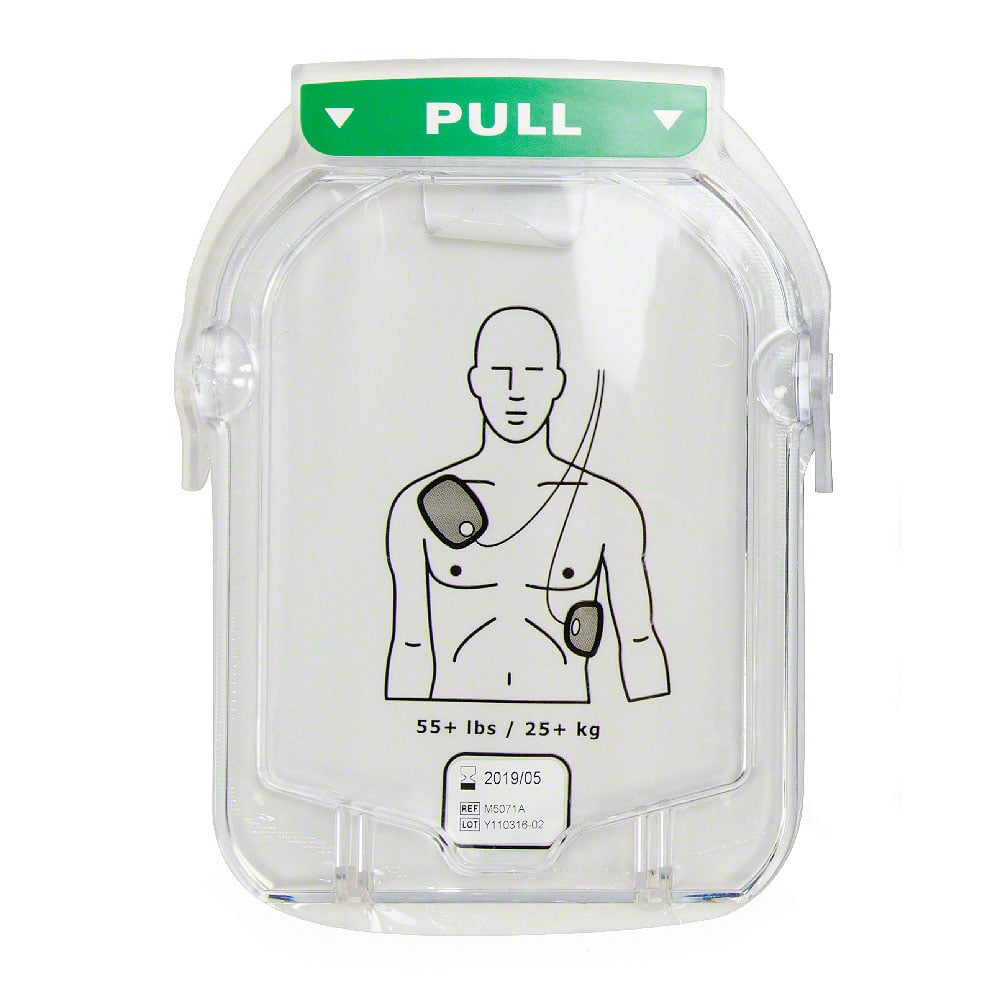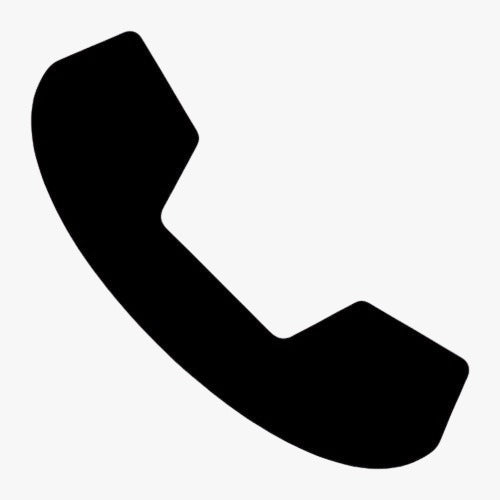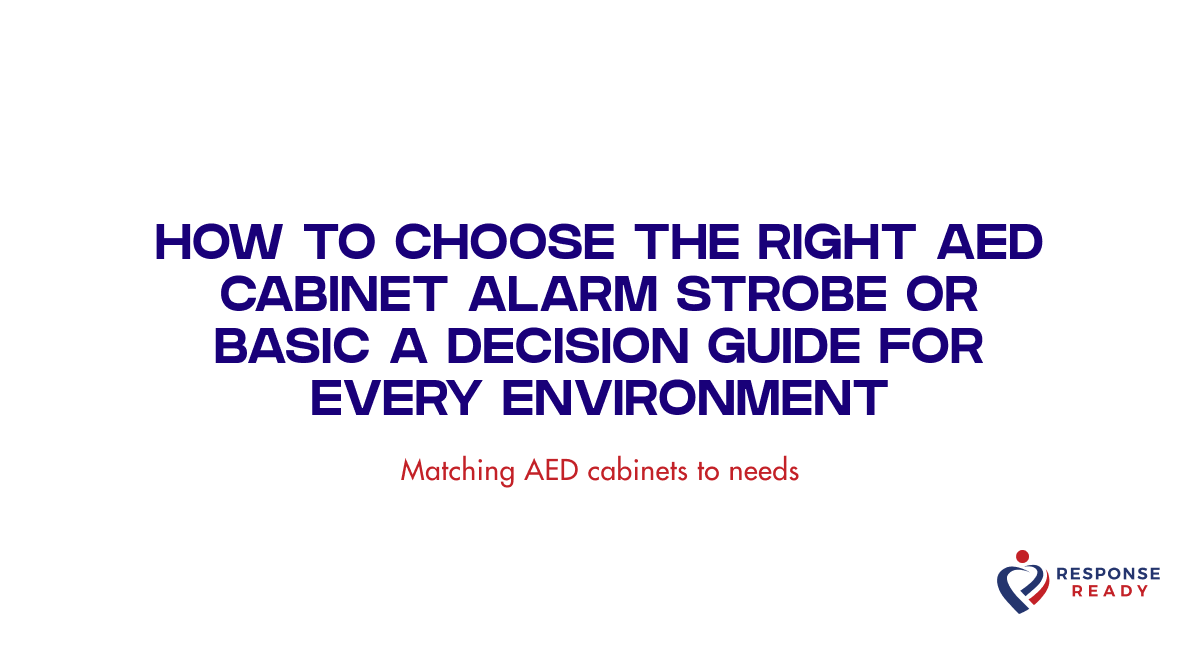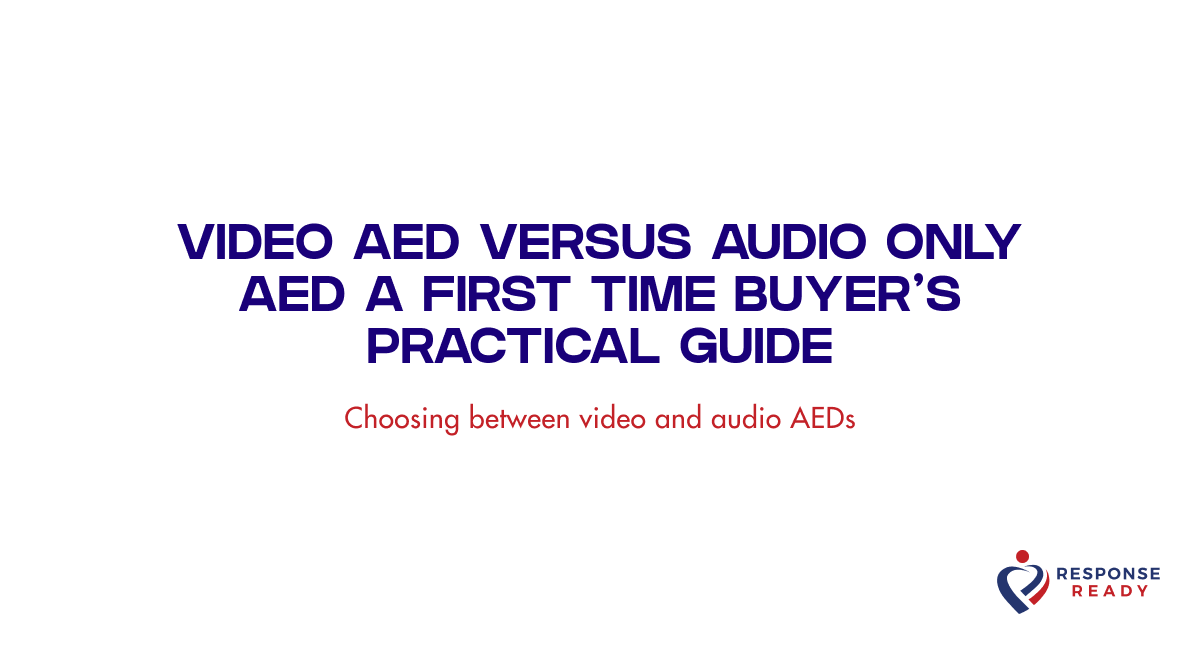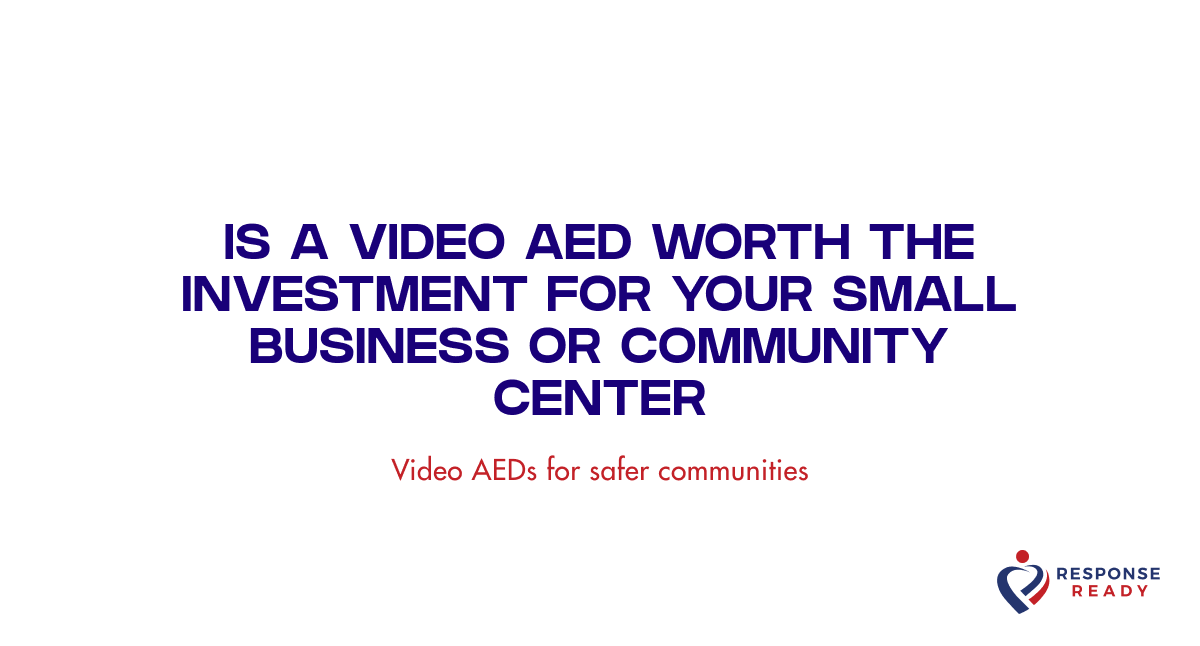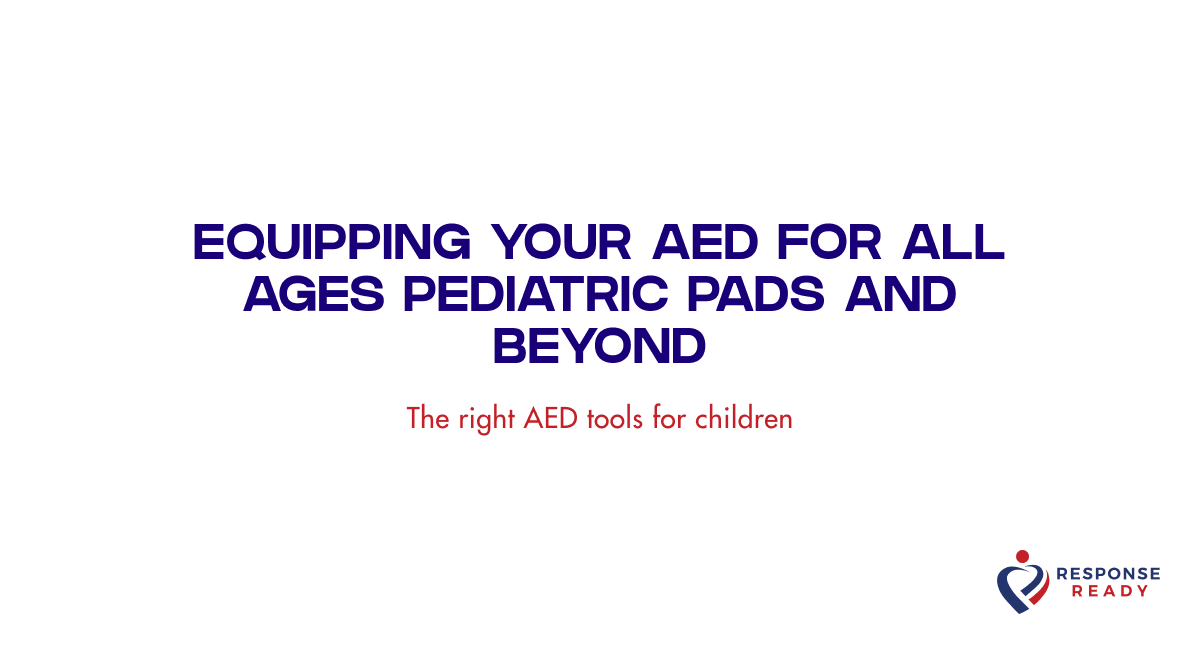An Automated External Defibrillator (AED) is one of the most important investments you can make for your home, school, or small business. But purchasing the device is only the first step. The ongoing readiness of your AED depends entirely on its accessories, specifically the electrode pads and batteries. Choosing the wrong ones, or failing to replace them before they expire, can mean the difference between a successful rescue and a tragic outcome.
The data is clear, an FDA report found that nearly half (45%) of all reported AED failures are due to accessory issues. Of those, 23.7% are from pad and connector problems, and 23.2% are from battery issues. This isn’t a small problem, it’s the single biggest point of failure for these life saving devices.
Navigating the world of replacement parts can feel stressful. You're worried about compatibility, expiration dates, and making a mistake that could have serious consequences. This guide is here to remove that anxiety. We’ll walk you through everything you need to know to select the correct, FDA-approved accessories with confidence, ensuring your AED is always ready to save a life.
Why replacing AED accessories is a life or death decision
It’s easy to think of AED pads and batteries as simple disposables, but they are highly engineered medical components. Understanding why they have a limited shelf life highlights the critical importance of timely replacement.
The science behind expiration dates
The most common reason for AED pad failure is expired hydrogel. Every AED pad has a layer of adhesive, conductive gel that serves two purposes, to stick firmly to a victim’s chest and to deliver the electrical shock effectively. Over time, this gel dries out.
When the hydrogel degrades, it can lead to:
-
Poor Adhesion:
The pads may not stick properly, especially on a sweaty or hairy chest, preventing the AED from getting an accurate heart rhythm reading. -
Ineffective Shock:
A weak connection means the full electrical charge might not reach the heart, rendering the rescue attempt useless. -
Skin Burns:
Improper conductivity can cause the electrical current to arc, resulting in burns to the victim's skin.
This is why most AED pads have a shelf life of 18-30 months from the date of manufacture. It’s not a suggestion, it’s a necessity. Similarly, AED batteries lose their charge over time, even when the device isn't used. A battery that fails during a rescue means the AED is nothing more than a plastic box.
The importance of FDA-approved accessories
As of February 3, 2022, the FDA requires all AED accessory manufacturers to have Premarket Approval (PMA). This is a rigorous review process that ensures every pad and battery sold in the U.S. meets strict standards for safety and effectiveness.
Purchasing from a trusted source like Response Ready guarantees you receive genuine, manufacturer-certified parts that comply with this mandate. Using unapproved, third-party accessories could not only void your device’s warranty but also introduces a dangerous, unknown variable into a life saving equation.
How to find the right parts for your AED
The easiest way to avoid confusion is to identify three key pieces of information: your AED's brand and model, the part numbers, and the expiration dates of your current accessories.
Identifying your AED model and part numbers
First, look at the front of your device. The brand (e.g., Philips, Defibtech, ZOLL) and the model name (e.g., HeartStart OnSite, Lifeline VIEW, AED Plus) are usually printed clearly.
Next, examine your current pad package and battery. They will have a specific part number printed on them. Matching this number is the most foolproof way to ensure you’re buying the correct replacement. The date is often marked with an hourglass symbol, while the part number is labeled as "REF" or "P/N".
Adult pads vs pediatric pads what you need to know
Choosing between adult and pediatric pads is critical. The difference isn’t the size of the pad itself but the amount of energy the AED delivers.
-
Adult Pads:
These are for anyone approximately 8 years or older, or weighing more than 55 pounds (25 kg). -
Pediatric Pads:
These are for children between 1 and 8 years old who weigh less than 55 pounds. These pads have built-in attenuators that reduce the shock’s energy to a safer level for a small child.
Using adult pads on an infant or small child can deliver a dangerously high level of energy. Conversely, using pediatric pads, for example ZOLL Pedi Padz II, on an adult will not deliver a strong enough shock to be effective. Some devices, like the Philips HeartStart FRx, use a single set of pads but require an Infant/Child Key to switch to pediatric mode. If your AED will be in a location with children, like a school or community center, having pediatric capabilities is essential.
Making the smart choice for long term readiness
When selecting accessories, consider the total cost of ownership and maintenance schedule. While most pads and batteries last about two years, some brands offer a significant advantage.
For example, the ZOLL AED Plus features a single, combined battery and pad unit with a five-year shelf life. This not only reduces long-term costs but also simplifies your maintenance routine, cutting your replacement schedule by more than half. For a small business owner or family, this "set it and forget it" approach provides invaluable peace of mind. When you're ready to buy, consider one of our AED value packages, which bundle a top-rated device with all the necessary accessories to keep you prepared for years to come.
Your partner in preparedness
At Response Ready, our expertise goes beyond selling boxes. We are committed to ensuring every device we sell is a device that's ready to work. We offer a comprehensive selection of FDA-approved AED pads and AED batteries for every major brand, making it simple to find the exact part you need.
To further simplify your readiness checks, the Response Ready App can help you manage your devices, track expiration dates, and automate compliance reminders right from your phone.
If you are ever unsure about what you need for your AED, our team of experts is here to help. Reach out through our live chat or call us for personalized guidance. Your confidence is our priority.
Frequently asked questions
Q: How often should I replace my AED pads and batteries?
A: You should always replace them before the expiration date printed on the accessory. Generally, AED pads last between 18 and 30 months, while batteries last from 2 to 5 years. Always check your specific device and accessories for exact dates. You must also replace pads after any use.
Q: Can I use expired pads in an emergency if they're all I have?
A: No. It is strongly advised against using expired pads. The conductive gel dries out, which can prevent the AED from analyzing the heart rhythm correctly or delivering an effective shock. It can also cause skin burns. Using expired components creates a significant risk of failure.
Q: Are your accessories original manufacturer parts?
A: Yes. All pads, batteries, and other accessories sold by Response Ready are OEM (Original Equipment Manufacturer) parts that are fully compliant with the FDA's Premarket Approval (PMA) regulations, ensuring the highest level of safety and compatibility.
Q: What happens if I use the wrong pads for my AED?
A: Using incorrect pads can lead to several problems. The connector may not fit your device, preventing you from using it at all. Even if it connects, the AED may not recognize the pads, resulting in an error and failure to deliver a shock. It can also void your device’s warranty.
Q: How do I dispose of old AED batteries and pads?
A: Used AED pads should be treated as biohazardous waste and disposed of according to your local guidelines. Unused, expired pads can typically be thrown away. Old AED batteries are considered electronic waste and should be taken to a designated battery recycling center, not thrown in the regular trash.
